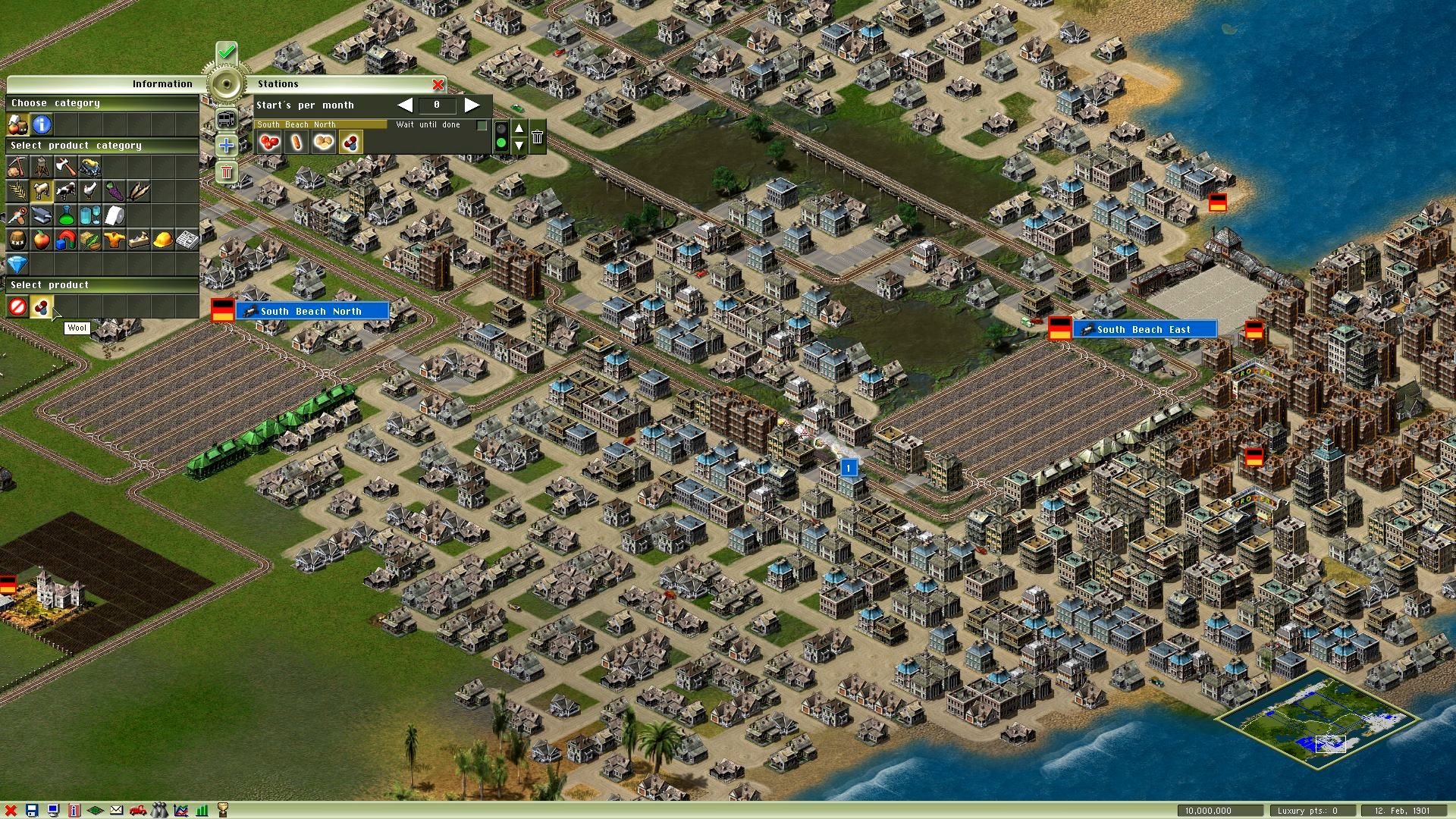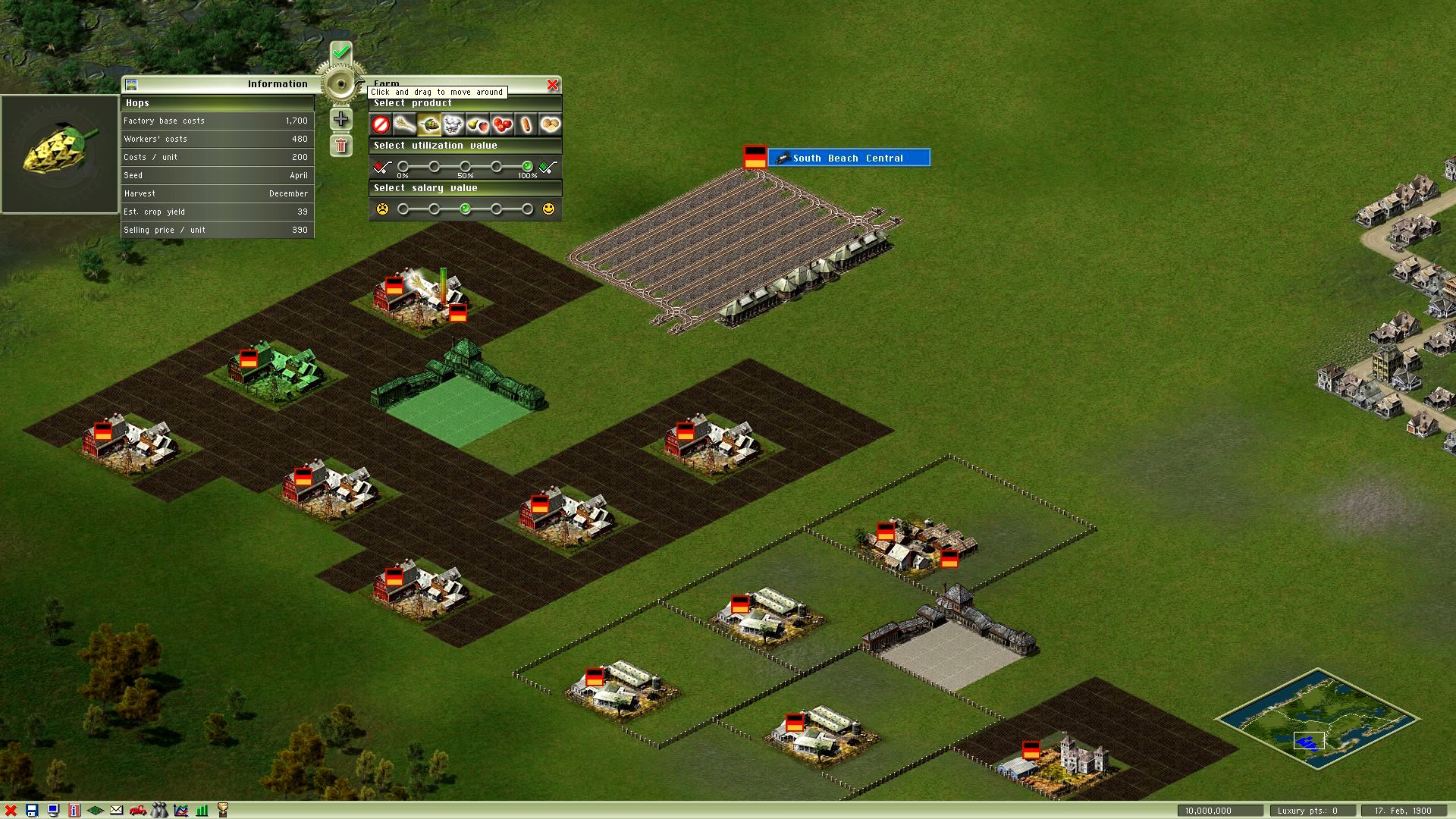Hidden Gems of Game Design: Volume 2
Back with the second edition of a list of games that deserved more recognition than they received

Thanks to the interest on SUPERJUMP, we are continuing to share the team’s picks through the Hidden Gems of Game Design series each month. The writing team has agreed there are plenty of games that deserve their time in the spotlight. Let us know what your favorite hidden gems are in the comments! Without further ado, here are this month’s picks.
Josh Bycer
Ironclad Tactics (2013)
For this month’s underdog submission, I couldn’t think of one more timely than a Zachtronics game. Zachtronics, helmed by Zach Barth, has been creating immensely challenging and deep games for more than a decade now. While their claim to fame has been Spacechem, the studio has gone in different directions over the years, and I’m sure some of their other games will show up on future entries.
With an announcement that Zachtronics is closing after their latest game, Last Call BBS, I wanted to talk about one of my favorites from the studio. In fact, the only one I managed to beat. Ironclad Tactics is a deck-building strategy game centered on an alternative civil war. In this world, robotic automatons known as ironclads have been built and are being used all around the world. When a mysterious faction threatens the US, it’s up to our heroes to go around the country and beat them one battle at a time.

Ironclad Tactics is a deck builder but is closer in structure to Library of Ruina (another game I will have to talk about in the future) as a story-driven game than it is to a Slay the Spire deck-building roguelike. You earn cards by playing the game, as well as completing bonus objectives on each map. Similar to his other games, this is a title where pre-planning is just as important as playing.
Each map is played turn-based, with both sides summoning units, having them attack and move, and the results of their actions happening in phases. Your mission is to get your ironclads over to the opposing side to score victory points. Infantry can be deployed to hold structures on the map, but any ironclads can crush them. Different ironclads come with different stats, attachment equipment, and more. Similar to a CCG, the cards are organized by factions, and you are only allowed two factions’ worth of cards per deck.
Missions vary in terms of obstacles and goals, and there are even boss fights that play out more as puzzles. The game received several mini-expansions and features online play, complete with unlocking additional cards through it.
Everything sounds good so far, right? Except it’s once again time to point out why it’s on a series about underdog games. Despite having a full single-player campaign, DLC, and online play, the entire game was a commercial failure. I’ve spoken with Zach on a number of occasions and he knows fully that his games are on the niche side. With Ironclad, it stands out as not being “on-brand” from the company. Similar to Spacechem, the difficulty ramps up and this is very much a game where you’re going to have a lot of failures before you get that win; even more so if you’re aiming for 100%.

From a multiplayer standpoint, Zach, unfortunately, committed two multiplayer game sins that I’ve seen indies do. The first is not launching with a stable online community. This was the first time he worked on a multiplayer-based design to go with his single-player campaign. Without having a community there before the launch, it was tough to find people to play with. Hurting things more was that there was a special co-op campaign to unlock even more cards.
For people who played it online, there was the second problem—having content locked away from one side. For people who got in early enough to unlock cards, they would go up against new players who didn’t have those unlocks. This created an imbalanced atmosphere much like Command and Conquer 4. It wasn’t until months later, after the game was out, that they decided to just unlock those cards for anyone starting out.
Ironclad Tactics was released in 2013, several years before Slay the Spire started the deck-building craze anew. Similar to last month’s Hinterland, I feel that this is another case of a game that came out at the wrong time. One year later, Hearthstone fever hit with a multiplayer CCG and I truly think that Ironclad Tactics had the charm and depth to go the distance. This is a lesson learned regarding building a community for your game prior to release and the risks of multiplayer development.
Even if you have no interest in the game, everyone needs to at least listen to the ending theme at least once. Zachtronic’s games may not be for everyone, but they are mechanically deep and are more about challenging your mind as opposed to your APM.

Antony Terence
Industry Giant II (2002)
Building a business empire wasn’t a novel adventure in the simulator space, especially in 2002. However, paying to delete existing buildings instead of getting a refund? Insanity. Now that I’ve got your attention, let’s talk about 2002’s business tycoon sim Industry Giant II. To preserve my sanity, let’s not discuss the title’s odd re-release on consoles in 2016.
Industry Giant II tasks you with stringing together a chain of goods and warehouses to sell finished products. Sure, it’s not the prettiest spreadsheet in the simulation space. Its dull visuals are rather forgettable. But dropping buildings on raw materials, growing into a global corporation, and raking in dollars has its own capitalist charm.
Matching industrial supply and consumer demand is no simple task.
The game’s pause button comes in handy when working out your elaborate schemes. While you get sliders for salary levels and efficiency, don’t expect to predict how much produce you’ll get out of each cog in the machine. Add transportation routes into the picture and you can see how Industry Giant II dishes out micromanagement hell for city planners to thrive in.
Your city’s demands grow as you hit your targets over the years, bringing in new product ideas to develop.


Source: Steam.
The sheer breadth of Industry Giant II’s product categories is incredible. You’ve got everything from donuts to newspapers and automobiles. Serve the American dream to your citizens, one spoon at a time. Adapt to changes like the weather (cue raincoats) and crop cycles (salary cuts during the winter) to step up the economic boom. Random events like stock market crashes and oil spills keep things from getting too predictable. It’s almost as if the game knows when you’re taking a rest.
Despite my fear of economics as a kid, I had a great time running through Industry Giant II’s videogame checklists. The game’s scenarios keep you informed with dozens of pings and floating icons over buildings. Doomscrolling meets business planning in a game that deserved more attention from city-building fanatics.
Ben Cantrell
Steredenn: Binary Stars (2015)
This game sits at just over 500 reviews on Steam and barely 25,000 hits on a Google Search, putting it firmly in the category of ‘hidden’ compared to gaming’s greats. What a shame that is, because 2015’s Steredenn: Binary Stars from the now defunct Pixelnest Studio is an intense and bombastic hybrid of bullet-hell shoot ‘em up and rogue-lite gameplay that’s thoroughly deserving of being considered a classic.
In Steredenn: Binary Stars the combination of rogue-lite and shmup works brilliantly, as the looming threat of perma-death ramps up the intensity of every fight and boss battle. Players have a health bar which represents the ship’s shield energy, and once this reaches zero, it’s game over. The only way to replenish shields is by defeating bosses, which becomes more punishing as players progress through the game’s seven increasingly hectic stages.
The game itself is fast and snappy — if a wayward rocket or laser breaks your shields and disintegrates your ship, just a few clicks and the next run has started again. This quick turnaround keeps things moving forward, death never feeling like a punishment. Instead, it’s a stepping stone towards improvement. The levels, enemies, and power-ups are randomized, so no two runs are ever alike, adding oodles of longevity. This really feels like a pure distillation of the rogue-lite formula.
The pixel-art graphics are gorgeous too and filled with tiny details. From the majestic backdrops of galaxies, nebulae and planets, the swarms of fighters in the distance, chaotic asteroid fields, and a menagerie of enemy types — from tiny fighters to huge bosses — make the game a visual wonder.
Later bosses really pack a punch too, firing everything from laser cannons to walls of missiles. The sound effects are loud and punchy. I recommend turning off the slightly annoying music and using headphones to play, which ensures those explosions really rattle your eardrums!

Like any good rogue-lite, the game offers a range of passive power-ups which slowly build your strength during each run. These can include anything from boosting attack damage, strengthening shields and adding score multipliers. There’s no meta-progression other than unlocking some new ships, which offer unique abilities (for example, more shields at the expense of agility). The only other form of meta-progression here is your own skill at playing the game, which after dozens of runs, does noticeably improve, especially once you learn the attack patterns of the various bosses.
There’s also a variety of randomized weapons available throughout the stages, which are dropped by exploding cargo ships. As you only have two weapon slots (along with a permanent third weapon), you have to be strategic about which weapons to deploy. Careful thought and strategy are required to determine if a newly available weapon is worth the pickup — not an easy feat when bullets are flying and you have only seconds to make your decision.
Aside from the regular gameplay mode, there’s also a Daily Run, which gives you one chance to get your highest possible score compared to a global leaderboard. These days there are only a handful of people playing, so I could rank third in the world based on my average run. Not bad! Another mode, Boss Rush, is like Daily Run, but only puts you up against bosses. Finally, there’s also an Arena Mode which serves as a training ground, allowing you to take on bosses and learn their attack patterns outside of a normal run.
Available on a large variety of platforms including Steam, Switch, Playstation and iOS, Steredenn: Binary Stars is certainly within reach of just about any gamer, and regularly goes on sale too. This is a furiously fun pixel-art treat you can pick up and play within seconds. For any fans of shoot ‘em ups, rogue-lites, bullet-hells, or just gorgeous pixel-art action games, here is one hidden gem that’s worth digging up.

Josh Gautreaux
Zombies Ate My Neighbors (1993)
The SNES was my first gaming platform, and with it I received a shoebox full of loose cartridges. Included among those were some well-known titles, such as Donkey Kong Country and Super Mario World. However, one title which enamored me the most was Zombies Ate My Neighbors.
The plot is fairly straightforward: there are zombies, they’ll eat your neighbors if unimpeded, thus you, the protagonist, must attempt to prevent that from transpiring. Whether that’s because you consider yourself a good neighbor or because the thought of having zombies in your neighborhood cramps your personal lifestyle is entirely up to you. Not limited to mere zombies, the enemies you’ll face are myriad of different creatures, such as chainsaw-wielding maniacs, mummies, aliens, poisonous weeds, and monster-sized babies stomping every which way.
In combating these foes, you’ll have to throw everything you’ve got at them, and I mean everything. You start with a water gun, and along the way, you can pick up various projectiles to direct at these necrotic figures, including a rocket launcher, tomatoes, talismans, and many other goodies that you find lying around in places they shouldn’t be. You can also make use of potions, deemed by a hypothetical FDA to be unsafe for consumption, to transform into either a hulkish monster to go on the offensive or a ghost for sneaking about defensively. Fortunately for anyone with a healthy fear of clowns (a healthy amount being any), they’re on your side this time around, as you can leave inflatable clown punching bags in your path to divert enemies in your pursuit.

Every level takes you to a distinct environment through a magic door frame that appears at the end of the previous stage (the door’s origins and motives are unclear). I don’t know how your neighbors keep ending up in such disparate locations, or why they are traveling to the pyramids in such harrowing times, but such is the life of a ’90s kid, I suppose. Navigating these locations is sometimes arduous, as the stages essentially function as mazes, including an actual hedge maze level, where you’ll have to use keys on locked doors or blast down walls. Many of the enemies will spawn ad infinitum, so you can’t idle for even a moment.
Making matters even more precarious is the weapon and equipment management. Press a button repeatedly to rummage for your item of choice, while hoping you don’t accidentally press the button too many times and have to cycle back around. One could make the argument that it isn’t the best game design, but personally, I think it adds to the tension and is more realistic in terms of the actual (speculative) zombie experience.
My favorite element of the game by far is the audio. The music that plays in the background of each stage sets the tone, and the sound effects that various enemies will make is just bone-chilling. Seriously, those ax-wielding dolls make me grate my teeth every time (and that’s the excuse I’m going to tell my dentist next time he spots a cavity). Something about the style of retro gaming audio just adds to the atmosphere of the game. Or maybe that’s just my nostalgia talking, but like many people, I’m going to convince myself that it’s my rational self who concluded this entirely of its own accord and close the matter to any contrary discussion.
Playing the game at the ripe age of five or six, I’m surprised I took so well to this game. Even playing this game twenty years later, many moments have me on the edge of my seat. It’s an old game, so it’s not the graphical realism that makes it distressing, if not outright terrifying. The constant tension makes you feel you are in the middle of the action. It’s like your own personal horror movie montage. It’s been nice to revisit the game after all these years now that I can better understand some of the pop culture references that litter the game. We’ve got Chucky, Friday the 13th, and Texas Chainsaw Massacre, to name a few, as well as several more, which still go over my head that I’m sure you classic horror fans will appreciate.

The game is also fairly challenging. I never beat it back in my youth, and I still haven’t beaten it even now. There are roughly 50 levels to complete, and you can either power through them all in one run or use the passwords they give you every four levels to return to that point, with the caveat that you won’t have a stockpile of items that you would have gotten in previous levels, which, to use a double-negative, isn’t a non-factor.
The best hope for survival in this game is to memorize everything. You’ll need to know the layout, neighbor, and item locations like the back of your hand because you’ll need all available cognition for swapping weapons to fend off the onslaught of enemies. You should also memorize the order of the inventory items for safe measure.
While originally released on SNES, the game has since been ported to current generation consoles and PC. While the quality of the port appears to be a matter of contention among fans of the game, playing the PC version with an Xbox controller ultimately didn’t present me with too many problems. You just won’t have in-game options to remap the button configuration. Otherwise, if my stray thoughts haven’t put you off from reading to this point, I recommend giving this game a shot!



